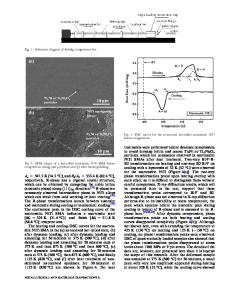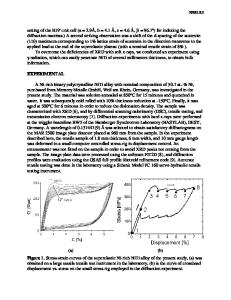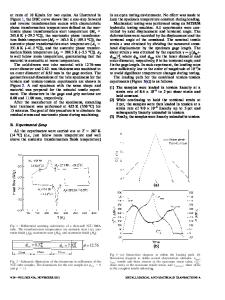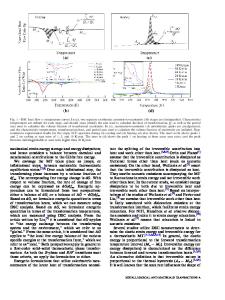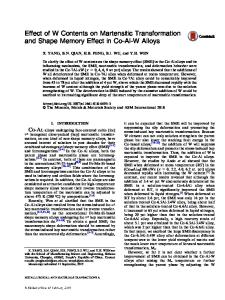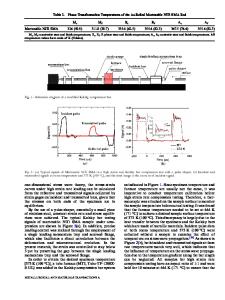In-Situ Study on Texture-Dependent Martensitic Transformation and Cyclic Irreversibility of Superelastic NiTi Shape Memo
- PDF / 1,903,574 Bytes
- 6 Pages / 593.972 x 792 pts Page_size
- 27 Downloads / 338 Views
tic NiTi shape memory alloy sustains large recoverable deformation thanks to reversible martensitic transformation.[1] On fabricating NiTi sheet, rolling is required to refine grains for better resistance to dislocation slip.[2–5] Associated with the reduction of grain size, rolling also gives rise to the presence of crystallographic texture and, accordingly, results in anisotropic superelasticity.[6–10] When subjected to cyclic thermomechanical loading, NiTi alloy suffers degradation of functional properties, i.e., the accumulation of residual strain, the drop of transformation stress, the increment of transformation hardening modulus, and the decrement of dissipation energy.[11–20] It has been substantiated that crystallographic orientation will influence the functional stability of single-crystal NiTi alloy[21–23] and polycrystalline NiTi sheet.[7,8] In these studies, however, primary attention is paid to the accumulation of residual strain, which is the joint outcome of material irreversibility and the peak strain of cycling.[13] The sole
JIANGUANG SHUAI is with the Department of Mechanical Engineering, Tsinghua University, Beijing 100084, P. R. China. YAO XIAO is with the Institute for Materials, Ruhr University Bochum, 44801 Bochum, Germany. Contact email: [email protected] Manuscript submitted July 25, 2019.
METALLURGICAL AND MATERIALS TRANSACTIONS A
effect of texture on martensitic transformation and irreversibility remains unknown. In order to fill the aforementioned gaps, we studied the influence of texture on cyclic response of polycrystalline NiTi sheet. Via in-situ digital image correlation (DIC), the evolution of irreversibility is correlated with local rather than global strain. The texture dependence of transformation strain is obtained and theoretical analysis is provided. In order to rule out the effect of peak strain on irreversible strain, a new parameter is introduced to evaluate and estimate material irreversibility. The material is commercially available polycrystalline NiTi sheet (Memry Corp., 50.8 at. pct Ni). The microstructure is checked by transmission electron microscopy (TEM, Tecnai G2 F20), as shown in Figure 1(a). Tensile specimens with thickness of 1 mm, gage length of 25 mm, gage width of 4 mm, and total length of 60 mm are cut along various orientations. The normal direction (ND) of the specimen is parallel to that of the sheet. The angle between the axial (tensile) direction and rolling direction (RD) is termed the orientation angle, which is set as 0 (RD), 23, 45, 68, and 90 deg (transverse direction (TD)), respectively. The austenite finish temperature (Af) is determined to be 11 °C by differential scanning calorimeter (TA Instruments, Q5000IR), as depicted in Figure 1(b). The texture of polycrystalline NiTi sheet is measured with an X-ray diffractometer (Rigaku D/max-2500/PC). The orientation distribution function (ODF) at u2 = 45 deg is calculated because all preferred orientations are visible in this section.[24–26] As shown in Figure 1(c), the dominant texture of the materi
Data Loading...
